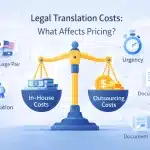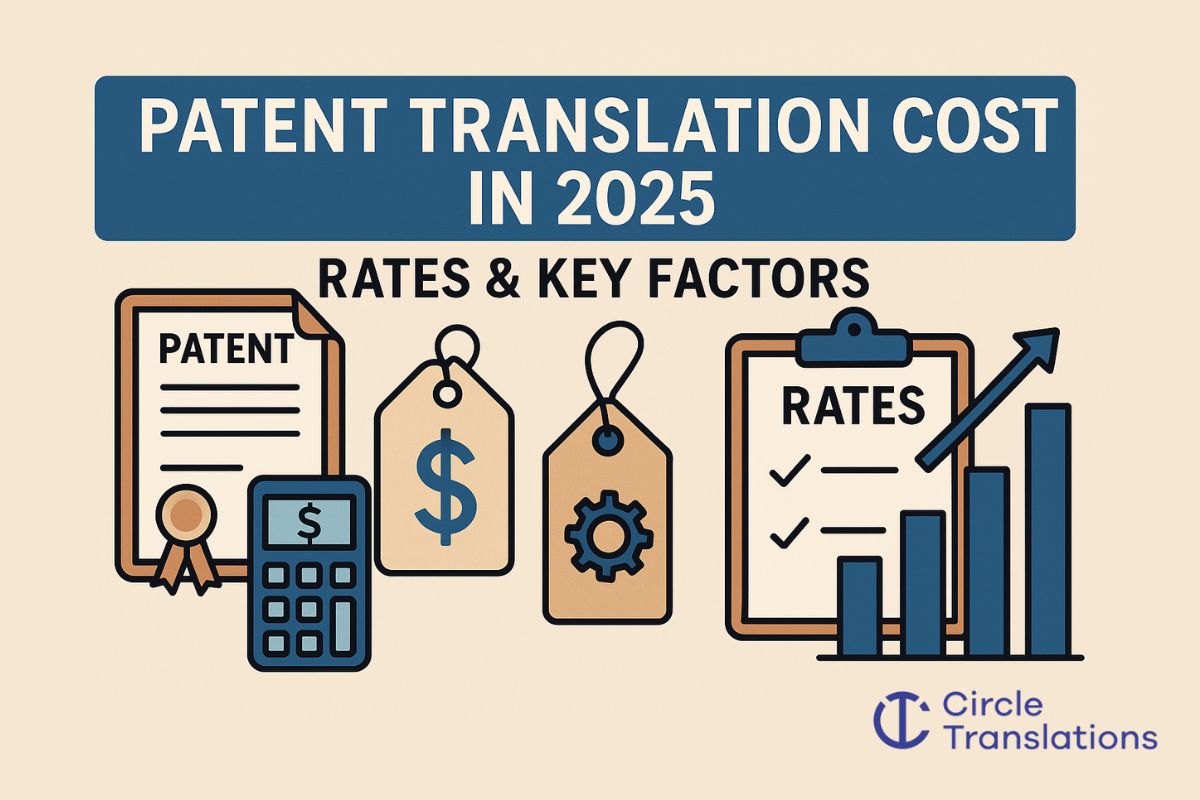Initially designed to help individuals with hearing disabilities, closed captions have evolved into indispensable components within the media and entertainment sectors. The surge in video content and the increasing need for accessibility have led to wider adoption and application of closed captions and subtitles, extending beyond their primary function.
A significant catalyst for the growing adoption of closed captions and subtitles is the progress in technology and artificial intelligence. These instruments have achieved unprecedented speed and precision by leveraging machine learning algorithms. This development has simplified the process for content creators to incorporate captions and subtitles into their videos and guarantees that audiences can effortlessly comprehend the material, irrespective of their hearing capabilities.
Thanks to these advancements, closed captions and subtitles are now used in various contexts beyond traditional media and entertainment. For example, they are used in online courses, corporate training videos, and live events. This development has enabled countless individuals to access and comprehend material that might have been unattainable otherwise.
Nonetheless, the growing use of closed captions and subtitles has given rise to numerous queries and apprehensions regarding captioning guidelines and norms. Inaccurate or ill-timed captions may result in anger or annoyance for those who depend on them. This further emphasizes the need to define explicit guidelines and standards for captioning. This is especially significant in education and professional development, as precision and lucidity are crucial.
Ultimately, the growing importance of closed captions and subtitles is undeniable, with improvements in their accuracy and swiftness contributing to enhanced accessibility and user-friendliness. Nonetheless, it is crucial to guarantee the establishment of appropriate guidelines and standards, enabling individuals of all hearing capacities to access and comprehend the content without hindrance.
Understanding Closed Captioning: An Overview
So what is closed captioning? This term refers to a textual instrument that presents the audio elements of a video in written form on the screen. These captions are created using special software that synchronizes the text with the video’s audio track.
They offer a written representation of the audio features, encompassing dialogue, sound effects, and music while synchronizing with the video content. Primarily aimed at aiding individuals with hearing difficulties, closed captions can also prove beneficial for non-native language speakers or those viewing videos in loud surroundings.
They are a crucial accessibility tool that enables millions of people to access and enjoy video content. Closed captioning significantly contributes to making media and entertainment available for those with hearing disabilities, allowing them to take part in social and cultural events that might have been unattainable otherwise. Closed captioning also provides a valuable resource for language learners, as well as individuals who prefer to watch videos with the sound off or in a noisy environment.
Numerous closed caption varieties exist, encompassing open captions embedded within the video that cannot be disabled, as well as closed captions that provide viewers with the option to enable or disable them. Some closed captions also include additional features, such as different fonts and colors, speaker identification, and sound effect descriptions.
The Significance of Closed Captions
Closed captioning serves as a vital instrument in guaranteeing video content accessibility for all, irrespective of one’s hearing capabilities or language skills. It offers a textual depiction of the audio elements in a video, letting people read the dialogue, sound effects, and music concurrently.
A main advantage of closed captioning is its ability to empower those with hearing difficulties to wholly immerse themselves in and appreciate video content. Closed captioning gives them a way to access this content and fully immerse themselves in the experience.
Closed captioning is also beneficial for individuals who are not native speakers of the language used in the video. It provides them with a written translation of the audio content, helping them to better understand and engage with the material. This is especially significant in educational and occupational settings, wherein individuals might be required to acquire new ideas or abilities in a language they have not yet mastered.
Moreover, closed captions are a valuable resource for individuals who prefer to watch videos with the sound off or in a noisy environment. For example, individuals who work in loud environments or have sleeping children can watch videos without disturbing others by turning on closed captions.
Apart from enhancing accessibility, closed captioning also gives content creators a chance to engage a more extensive audience base. By including closed captions, they can appeal to individuals who may have been unable to engage with their content, expanding their reach and impact.
Overall, closed captioning is an essential tool that provides access and inclusivity to individuals with hearing impairments and language barriers and those who prefer text-based content.
Elements of Good Closed Captioning
It’s important to understand that closed captions can greatly vary in quality. In order to guarantee their efficacy and utility, it is essential that those in charge of creating them follow specific guidelines and standards. Here are some elements that are considered essential for good quality closed captioning:
- Accuracy – Closed captions must accurately reflect the spoken dialogue and other audio content in the video. This includes proper spelling, punctuation, and grammar. In educational and professional settings, precision holds particular importance, as misinformation could lead to severe repercussions.
- Timing – Closed captions must be timed correctly to match the spoken words and other audio elements in the video. If captions are delayed or ahead of the audio, it can be confusing and frustrating for viewers.
- Clarity – Closed captions must be easy to read and understand. This includes using appropriate fonts, colors, and sizes and avoiding long sentences or complex vocabulary. Captions should also be properly formatted, with breaks between speakers and indicators for sound effects or music.
- Consistency – Closed captions should be consistent throughout the video, with the same style, formatting, and accuracy maintained from start to finish.
- Accessibility – Closed captions should be accessible to everyone, regardless of their device or platform.
- Review and Editing – Closed captions should be reviewed and edited by a professional to ensure that they meet all the above criteria. This includes checking for errors, verifying accuracy, and making any necessary revisions.
Closed Captioning Standards and Protocols
In order to guarantee quality and effectiveness, closed captions must comply with particular norms and procedures. This includes both technical requirements (such as accuracy, timing, clarity, and consistency) and accessibility guidelines (e.g., ensuring that captions can be turned on or off easily).
The most widely adopted standard for closed captioning is the Web Video Text Tracks Format (WebVTT). The open format, created by the World Wide Web Consortium (W3C), is compatible with leading streaming services like Netflix and Amazon Prime Video. WebVTT enables captions to be encoded into video files as separate text tracks, making them accessible to viewers using different devices and platforms. It also provides features such as speaker identification, multiple fonts and colors, and sound effect descriptions.
In addition to technical standards, there are also several accessibility guidelines for closed captioning that content creators and providers should follow. This includes ensuring that captions can be turned on or off easily, providing alternative language tracks when available, ensuring that videos with close-captioning enabled play correctly across all devices, and offers closed captioning services for live events.
Overall, closed captions are becoming increasingly important as video content expands in popularity. By following the correct standards and protocols for closed captioning, content creators and providers can ensure their video content is accessible and inclusive to all viewers.
Get Your Captions Right with Circle Translations
If you are looking for a reliable and professional transcription and captioning service provider, look no further than Circle Translation. Our team of experienced professionals has years of experience in providing accurate and high-quality closed captions that meet the latest guidelines and standards for accessibility.
At Circle Translation, we use the latest technology and tools to ensure that our captions are accurate, timed correctly, and easy to read. By collaborating closely with our clients, we grasp their needs and expectations, consistently aiming to provide top-notch customer service and gratification.
Our closed captioning solutions cater to an extensive range of video materials, encompassing films, television programs, e-learning courses, business training videos, and live occasions. We work on both closed caption and open caption projects, as well as provide transcription and subtitle translation services to meet all of your video content needs.
With Circle Translation, you can trust that your closed captions will be done right the first time, meeting all of the relevant guidelines and regulations. Our dedication lies in delivering the most precise and efficient closed captioning services, thereby guaranteeing that your video content remains accessible to every viewer.
So if you’re ready to take your closed captioning to the next level, contact Circle Translation today and let us help you meet your captioning needs.
Subtitles

Professional and Accurate Subtitle Services for your Videos.
- Video subtitles specifically tailor-made for improving accessibility.
- Using highly experienced subtitlers with years of industry experience.
- Professionally written and expertly timed.
Translation

We help the world’s top companies translate their content in over 73 languages!
- We localize content for internet websites, games, travel, cryptocurrencies, and more
- Expand your global audience by adding different languages.
- We work only with qualified translators and experienced content creators
Audio translation

Ensuring full accessibility for Blind and visual impaired audiences.
- Visual descriptive events as they occur in the video.
- Working with top audio describers to perfectly describe what is happening on-screen
- Professional sound recording.














